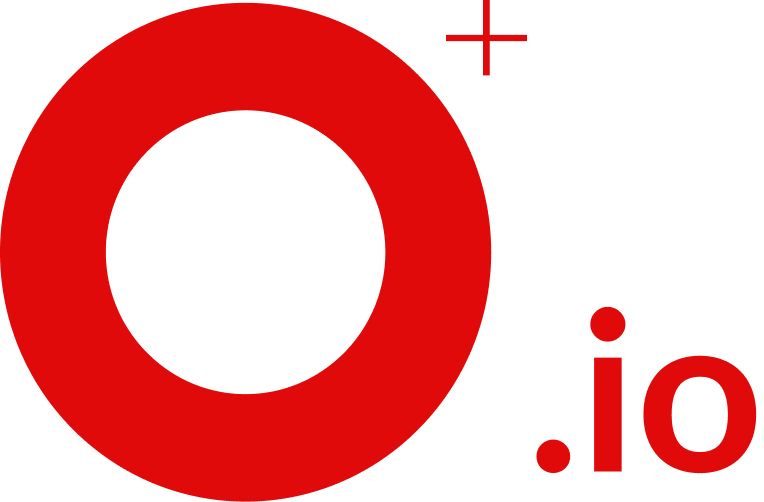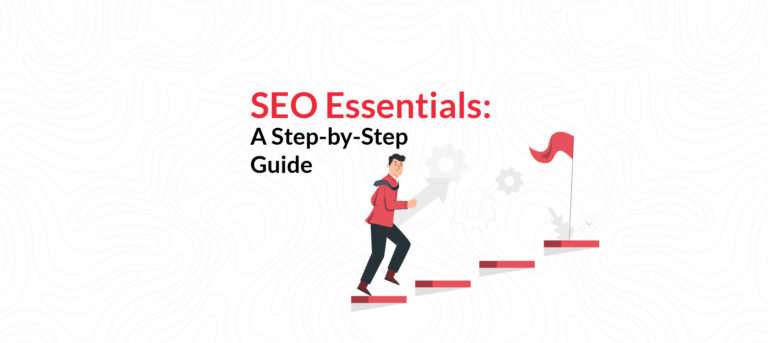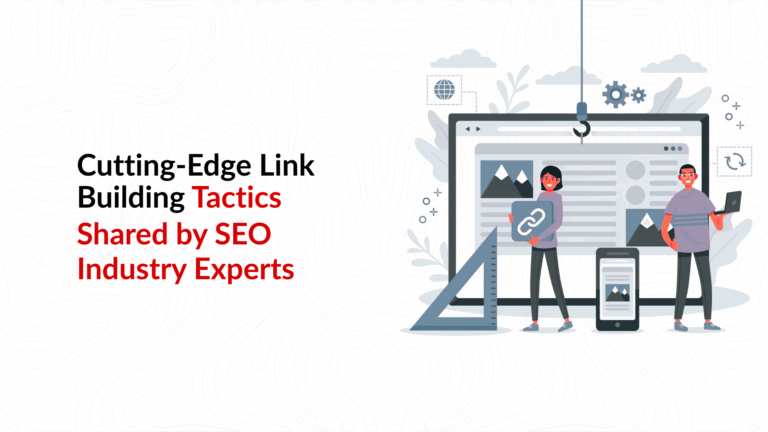The Ultimate Guide to Hiring a B2B SaaS SEO Agency: 9 Key Considerations
Choosing a B2B SaaS SEO agency isn’t about chasing pageviews—it’s about building a dependable engine for a qualified pipeline. In B2B software, buyers arrive with specific jobs-to-be-done: a CFO comparing compliance options, an IT lead searching for “SAML SSO setup,” a RevOps manager looking up “[tool] + Salesforce integration.” The right partner translates those intents into a coherent scaffold of pages—problem explainers, solution walkthroughs, comparison and alternative pages, integration guides, and product docs that move a prospect from learning to evaluation to action with minimal friction. A strong agency will start with research (customer calls, support tickets, sales objections), map keywords to funnel stages (TOFU/MOFU/BOFU), and design internal links that nudge the next step—trial, demo, pricing, or documentation. They’ll keep the site technically sound (fast loads, clean sitemaps, error-free indexing) and earn relevant authority through partners, customers, and credible publications. Most importantly, they’ll speak the language of outcomes: CAC, payback, SQLs, influenced revenue, and support deflection—not vanity metrics. When your content answers “Can it do X?”, shows the exact steps, and proves security/compliance in plain words, evaluations shorten and close rates rise. That’s the compounding value a seasoned B2B SaaS SEO agency brings: systematic growth that holds steady even when paid budgets fluctuate.
Importance of SEO for B2B SaaS growth
• Captures high-intent demand across all stages (awareness → consideration → decision), converting searchers into trials, demos, and SQLs.
• Reduces blended CAC by compounding non-paid acquisition and reusing content across sales, success, and partnerships.
• Shortens evaluations by answering technical, security (e.g., SOC 2, GDPR), and ROI questions upfront—fewer “Can it do X?” emails.
• Expands partner-led revenue via integration pages and co-marketed guides that attract links and referred signups.
• Builds defensible moats: authoritative clusters and earned links are harder to replicate than ads.
• Creates a measurable feedback loop—SERP signals, conversion data, and sales insights continually refine messaging and product-market fit.
What Is B2B SaaS SEO and Why It’s Different
B2B SaaS SEO is the practice of turning problem-, use-case-, and integration-led searches into product evaluations and a qualified pipeline. It differs from generic SEO because buying cycles are longer, committees are larger (Finance, IT/Security, Ops), and keywords are lower-volume but high-value (e.g., “[tool] + Salesforce,” “SOC 2 compliance”). Success is measured by trials, demos, SQLs, and influenced revenue—not pageviews. This is where hiring SaaS SEO experts helps: they build intent-based clusters (education → comparisons → product), wire in docs/integration guides, and make every page push a next step.
Importance of aligning SEO with long-term SaaS growth goals
SEO should build the business, not just the blog. Plan topics around what you’re actually shipping—features on the roadmap, integrations your customers keep asking for, and the industries you’re targeting next. Treat each topic cluster like a mini-product and judge it by real steps, not vanity stats: impressions → click-through rate → trials/demos → Sales Qualified Leads → payback and the LTV: CAC ratio (customer Lifetime Value to Customer Acquisition Cost). Keep winners fresh when the UI, pricing, or limits change; co-market new integrations with partners; merge or retire pages that don’t earn clicks or conversions. When SEO aligns with your north-star metrics and product plans, it reliably lowers blended CAC, speeds up evaluations (fewer “Can it do X?” emails), and even improves retention because customers find up-to-date guides the moment they need them. Think of it as a flywheel that gets faster with every release.
Signs You Need a Specialized B2B SaaS SEO Agency
Traffic growth plateau or low conversions
Organic sessions creep up (or stall), but trials/demos don’t. That usually means intent mismatch, thin comparison/integration coverage, or slow templates hurting Core Web Vitals (CWV). A specialized B2B SaaS SEO agency will re-map keywords to stages, rebuild internal links toward clear CTAs (Call to Actions), and tune templates so qualified visitors convert.
Poor lead quality or a misaligned audience
You’re attracting readers, not buyers—students, freelancers, or the wrong geo/segment—while your Ideal Customer Profile (ICP) is mid-market or enterprise. Content skews to generic “what is” posts instead of “[tool] vs [competitor]” or “[your product] + [stack]” pages. Hiring SaaS SEO experts helps refocus clusters on industry, compliance, and integrations that your ICP actually searches for, improving Trial→SQL (Sales Qualified Lead) rates.
Limited internal SEO capabilities
Your team ships products, not playbooks: no owned keyword map, inconsistent schema, messy sitemaps/canonicals, and little bandwidth for link-earning with partners. A specialized agency brings process—research, briefs, technical hygiene, and repeatable motions (integration guides, data assets, co-marketing)—so SEO compounds without overloading Engineering or Product Marketing.
9 Key Factors to Consider When Hiring a B2B SaaS SEO Agency
1. Proven Experience and SaaS SEO Case Studies
~ Review client success examples and real growth data
~ Look for SaaS-specific case studies (traffic, MQLs, ARR impact)
Don’t buy theory—buy proof. Ask the agency for saas seo case studies that show a clean storyline: baseline → work shipped → outcomes → time-to-impact. The numbers should tie to revenue signals, not vanity stats: trials, demos, SQLs/PQLs, qualified pipeline, ARR. Push for the artifacts Sales actually reuses—comparison pages, integration walkthroughs, ROI calculators, security/compliance explainers—and confirm they moved deals forward. A great partner will also share what didn’t work and how they iterated. If they can’t connect each asset to its job (e.g., “[tool] vs [competitor]” drives BOFU conversions) and show lift beyond traffic, keep looking.
2. Deep Understanding of SaaS Buyer Journeys
~ Keyword mapping across funnel stages
Your partner should map queries to TOFU/MOFU/BOFU and specific page types (education, comparisons, features, integrations, pricing/security). Each page gets one job and one next step; internal links guide readers from learn → compare → evaluate → try.
3. Data-Driven and Technical Expertise
~ Strong auditing and analytics proficiency
You need a crew that fixes leaks before anyone buys ads. They crawl your site, tidy IA, canonicals, and XML sitemaps, then check server logs to see what Googlebot really touches. Core Web Vitals are tracked at the 75th percentile per template with named owners and SLAs. GA4 and GSC are wired so you can see which cluster sparked trials, demos, and SQLs—not just visits. Pages ship with clean Product/FAQ/HowTo schema and scannable sections so AI/SGE can quote your definitions, steps, and facts without confusion.
4. Tailored SEO Strategy, Not One-Size-Fits-All
~ Custom plans aligned with SaaS growth goals
No boilerplate. The plan follows your ICP, CAC/LTV, payback targets, and GTM model—PLG, sales-led, or hybrid. Tight payback? Go BOFU first: pricing, comparisons, integrations, and security. PLG motion? Prioritize docs, quick starts, and sandboxes that reduce “Can it do X?” emails. Roadmaps mirror integration releases and assign one job and one CTA to every page. KPIs sit at cluster level: ranking → CTR → trials/demos → SQLs/PQLs → pipeline/ARR, with weekly shipments, quarterly refreshes for winners, and retire/merge rules for pages that don’t perform.
5. Transparent Reporting and Metrics
~ Clear KPIs and consistent communication
Dashboards should read like a board slide: trials, demos, pipeline, ARR—by page type—with assisted conversions. Maintain a steady cadence: weekly action notes, monthly KPI reviews, and a short narrative—what shipped, what moved, why, and what’s next.
6. Strong Content and Thought Leadership Capabilities
~ Problem-solving, product-led content focus
Look for content that reduces “Can it do X?” emails: comparisons/alternatives, integration guides, ROI/migration explainers, and trust modules (SOC 2/ISO, uptime). Content should pair “how it works” with “why it matters” and clearly link to pricing, docs, or a demo.
7. Expertise in Link Building for SaaS Niches
~ Quality backlinks from SaaS/tech sites
Think taste, not tally. The strongest links already orbit your product—partners, happy customers, integration ecosystems, app marketplaces, and credible tech publications. Ship link-worthy assets (integration how-tos, migration checklists, mini-datasets/benchmarks, security/compliance explainers) and pair them with simple co-marketing: “guide goes live → partner blog mention → docs link → newsletter/social.” Run a monthly motion: reclaim unlinked brand mentions, refresh outdated references, and pitch 10–15 relevant resource pages or industry roundups. Keep anchors natural (brand, product, “product + integration”) and avoid spammy exchanges. Crucially, map every earned link to the cluster it should lift—comparisons, integrations, security—not the homepage. Then measure where it matters: rank → CTR → trials/demos for that cluster.
8. Integration with Product, Sales, and Marketing Teams
~ SEO alignment across GTM strategy
Think scrum, not scramble. Set clear owners—who research, write, review, ship—and run a simple sprint rhythm so SEO moves with the GTM (Go-To-Market) plan. Build a Sales/CS (Customer Success) feedback loop: the top five objections from calls become next week’s pages. For every feature or integration launch, use a one-pager playbook: brief, target queries, URL, redirects, internal links to docs/pricing, screenshots, schema, and a post-launch QA checklist. Two weeks after ship, review indexation, Core Web Vitals, early rank/CTR, and hand-offs to Sales. When Product updates, SEO updates—so buyers always find the latest path to “try” or “talk to sales.”
9. Budget, Contracts, and ROI Expectations
~ Clear pricing models and measurable ROI
Open the numbers. Lock scope, deliverables, milestones, and acceptance criteria up front, then re-baseline quarterly. Choose pricing that fits the job: project (audits/migrations), retainer (publish/iterate), or hybrid (sprint bursts + steady ops). Define ROI before kickoff: cluster-level targets that ladder from rankings → CTR → trials/demos → SQLs/PQLs → pipeline/ARR, with time-to-impact windows by page type. Expect a short narrative in every report: what shipped, what moved, what stopped. Hire for a partner mindset: if a bet underperforms, they surface it early, pivot fast, and protect budget like it’s their own.
Common Mistakes to Avoid When Hiring SaaS SEO Experts
Choosing by cost over quality. Picking the cheapest seo marketing agency may look efficient, but it rarely delivers outcomes for seo for b2b saas. B2B cycles are long, multi-threaded, and integration-heavy; generic checklists don’t move the pipeline. Insist on plans that map search intent to demos, trials, and revenue—not vanity traffic. Ask how their playbooks for seo for saas companies adapt to compliance, security reviews, and buyer committees. Cheap work often ignores roadmap reality, ships thin pages, and leaves sales asking “Can it do X?”—a problem strong saas seo case studies are designed to prevent.
Ignoring SaaS-specific experience. B2B stacks hinge on integrations, data flows, SLAs, and roles. If a partner can’t discuss “[tool] + Salesforce/Jira,” SSO/SAML, or migration friction, they’ll publish content that attracts readers, not buyers. Review their saas seo case studies for product-led assets: comparisons, alternatives, integration walkthroughs, ROI explainers, and security pages. Teams that truly understand seo for b2b saas wire every page to a next step (pricing, docs, trial).
Overlooking transparency and reporting. Demand clear KPIs and cadence. You want dashboards that read like board slides: trials, demos, SQLs/PQLs, pipeline, ARR—tagged by page type and cluster—plus a narrative of what shipped and what moved. If they can’t show how seo for saas companies connects impression → page → pipeline, keep looking. Ensure you’ll receive quarterly learnings, page refresh plans, and backlog priorities. Link this from your internal “what is saas seo” explainer so new stakeholders can self-serve context.
How to Evaluate a B2B SaaS SEO Agency Before Signing
~Smart questions during discovery calls.
- “Walk me through two saas seo case studies where you improved trials/demos, not just traffic. What changed in the first 90 days?”
- “How do you structure seo for b2b saas clusters—education, comparisons, features, integrations, pricing/security—and map each to a single CTA?”
- “What’s your approach to Core Web Vitals and index management on docs/knowledge bases?”
- “How will you tailor seo for saas companies in regulated or enterprise contexts (data residency, SOC 2, ISO, DPA)?”
- “What will our first 6 weeks look like—research, SEO audit, briefs, and publishing rhythm?”
Compare proposals and deliverables. Strong proposals translate discovery insights into page types and measurable goals. Look for:
- A keyword-to-page map for seo for b2b saas (TOFU/MOFU/BOFU); each URL has one job and one next step.
- Content kits that Sales actually reuses: side-by-sides, “You vs Competitor,” integration guides, ROI/migration pages—backed by saas seo case studies.
- Technical plan: template performance budgets, schema (Product/FAQ/HowTo), sitemap/canonical discipline, log checks, and a publishing QA checklist.
- Distribution and authority plan suited to seo for Saas companies: partner co-marketing, customer stories, digital PR with small data assets, and unlinked-mention reclamation.
- A content lane for Content Marketing For Saas Industry (anchor this to your hub): thought leadership that feeds top- and mid-funnel while pointing to product-led assets.
Assess roadmap clarity and timelines. You want a 90-day program with shipments every week. Milestones should cover: interviews, SEO audit close-out, first four revenue-proximate pages (typically comparisons, integrations, pricing/security), and two refreshes of existing winners. Roadmaps should show how seo for b2b saas will track ranks → CTR → trials/demos → SQLs/PQLs → pipeline. Request a simple RACI so Product Marketing, Docs, and Sales know when to review and how internal links will be implemented.
Final Checklist Before Hiring Your Ideal SaaS SEO Partner
Review the 90-day plan and KPIs. Ensure the plan names 6–8 URLs that will ship or be refreshed, with target intents and CTAs. Confirm how seo for saas companies success will be measured: non-brand clicks, SERP CTR, demo/trial starts, SQLs/PQLs, pipeline, and influenced ARR—by cluster. Verify the cadence for search-intent updates, schema changes, and interlinking.
Validate reviews and past results. Ask for at least three saas seo case studies and two references you can call. In each, check baselines, time-to-impact, and the quality of artifacts (e.g., integration setup pages, pricing explainers) that Sales actually used. Look for evidence of durable playbooks in seo for b2b saas: quarterly refreshes, partner co-releases, and doc/blog cross-links that reduced “Can it do X?” emails.
Confirm alignment with business goals. Tie the program to ICP, ACV, payback targets, and your GTM (PLG, sales-led, or hybrid). If you’re expanding an enterprise, the first waves of seo for saas companies should emphasize security, compliance, and procurement readiness; if you’re PLG, prioritize docs, quick-start guides, and sandboxes. Agree on who owns briefs, who publishes, and who implements internal links so the content flow doesn’t bottleneck.
Conclusion
Recap top hiring takeaways. Choose SaaS specialists with real saas seo case studies, a reproducible discovery → brief → publish rhythm, and outcome-based reporting. Make sure their SEO audit and technical work keep templates fast and indexable, and that content ladders from education to product with one clear next step.
Reinforce the value of SaaS-focused expertise. The right partner treats seo for b2b saas as a revenue system: clusters that reflect evaluation, playbooks for integrations and security, and refresh cycles that protect winners. Done well, seo for saas companies lowers blended CAC, shortens evaluations, and feeds Sales with links they want to paste.
CTA. If you’re comparing partners, shortlist a SAAS SEO agency that can show measurable lifts in trials, demos, and pipeline—not just traffic. Keep your internal anchors ready: “what is saas seo” for education, “SEO audit” for technical hygiene, and “Content Marketing For Saas Industry” for thought-leadership hubs—then ask your agency to plug each into a single, consistent journey.
FAQs
What are the 3 C’s of SEO?
Content, crawlability, credibility. Answer the exact question, keep pages fast and structured, and earn citations worth trusting.
What is the golden triangle of SEO?
User intent, technical health, authority. Start with intent, reinforce with clean, speedy pages, and build authority through reference-worthy work.
What are the three main pillars of SEO?
On-page (intent-fit content and UX), technical (speed, schema, clean IA), off-page (brand/links). Treat them as one system aimed at trials and demos.
How do agencies optimize for long SaaS sales cycles?
They map pages to each step—short explainers, integration pages, side-by-sides, ROI/security pages, and customer proof—and they track assisted conversions, demo-to-close, and cycle time.
How long does it take to see results from SaaS SEO?
Expect early signals in 8–12 weeks (coverage, impressions, first assisted conversions), with compounding gains over the next 2–4 quarters as topical authority builds. Baseline authority, content velocity, and category competition all play a part.














